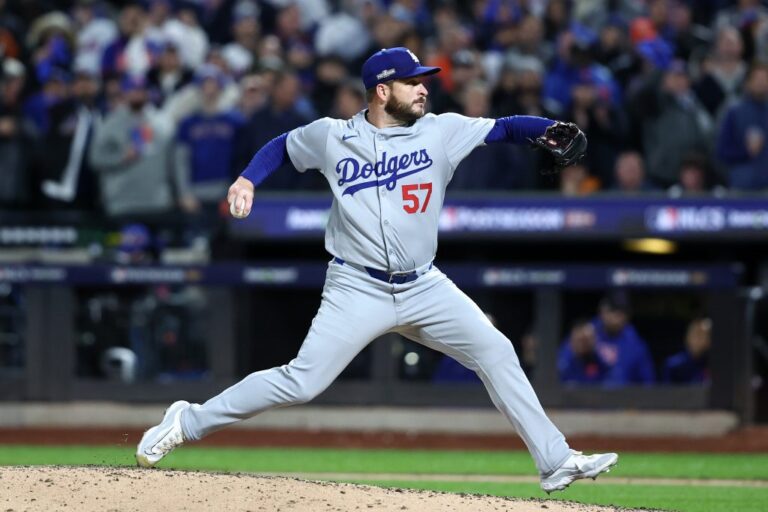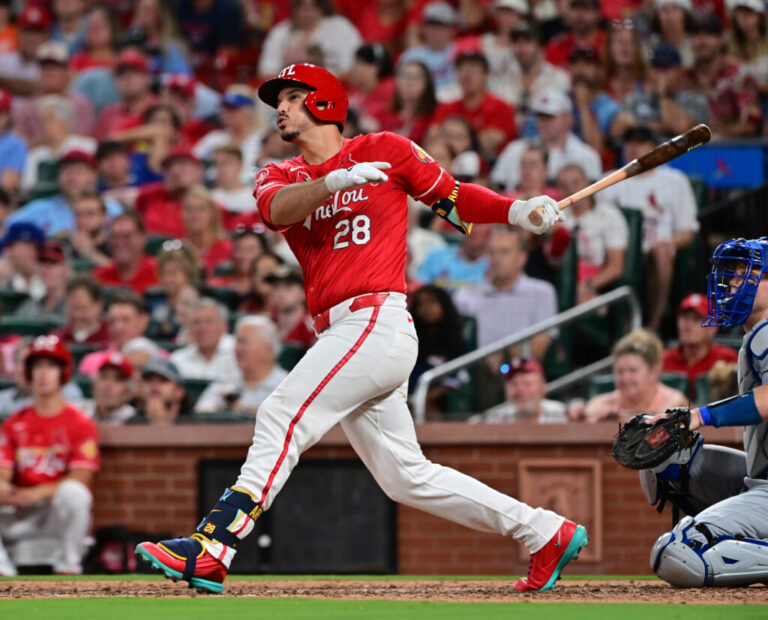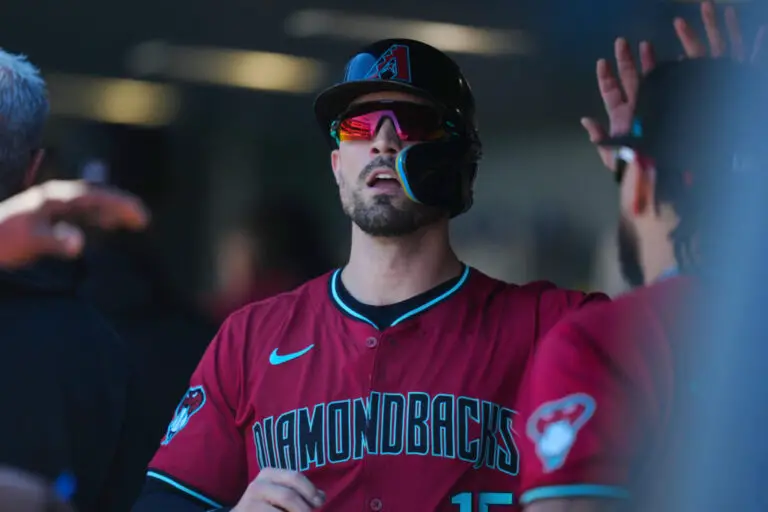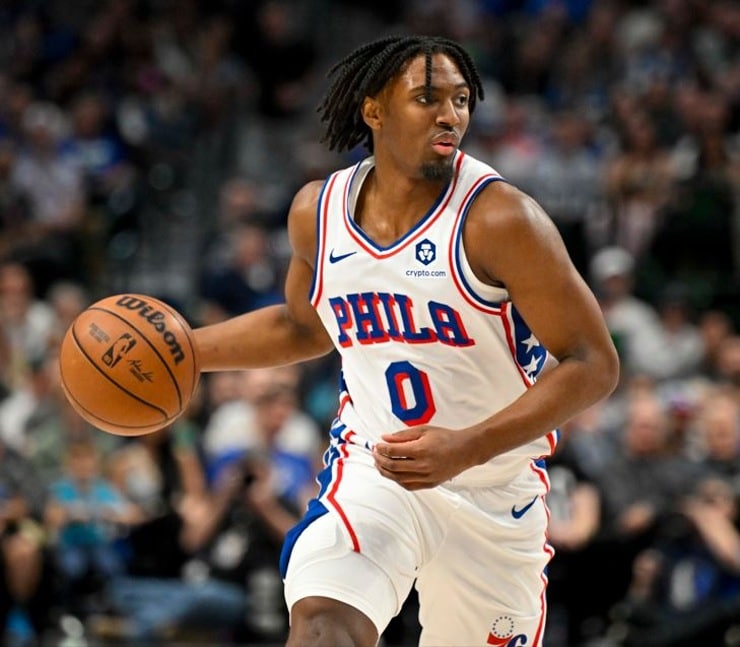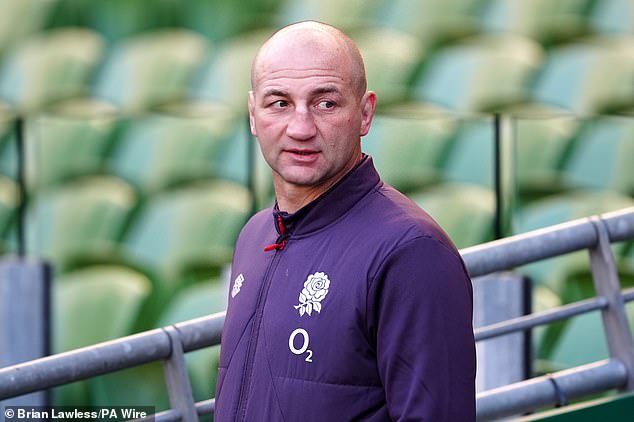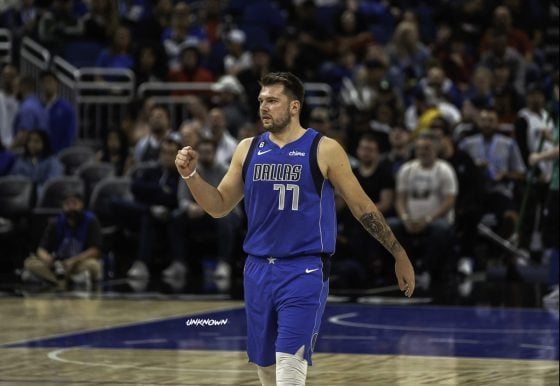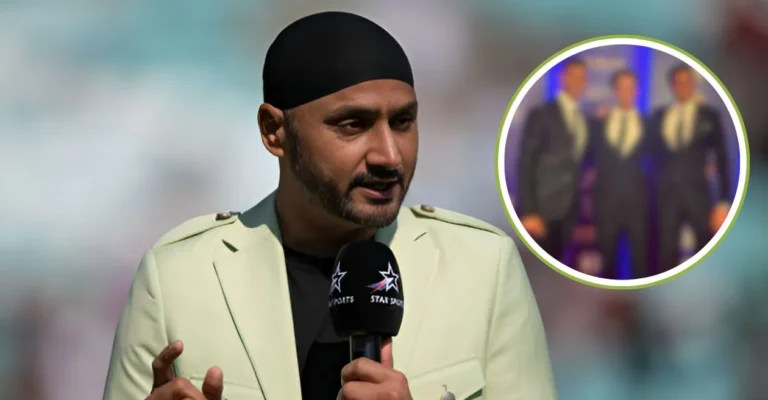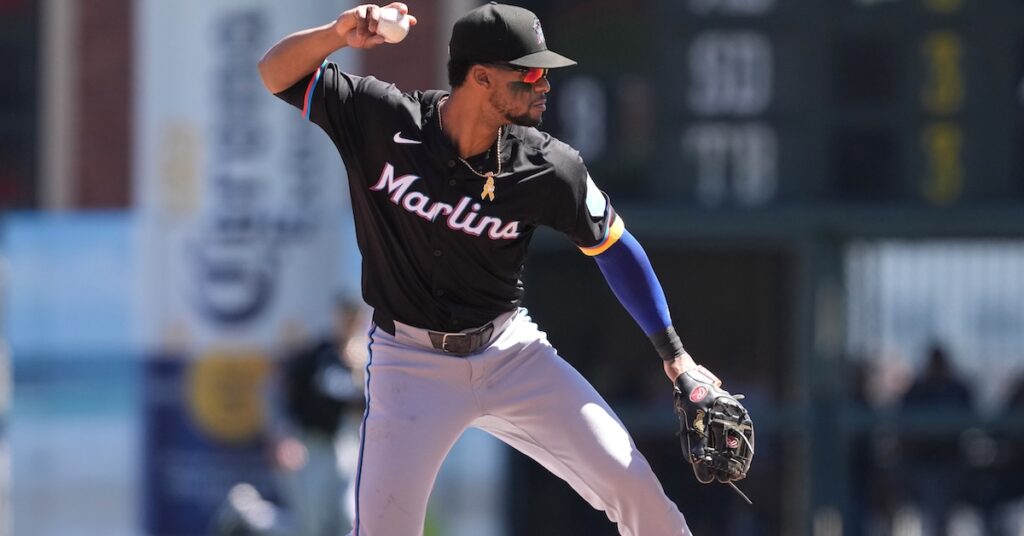

The other day, I was poking around on the Minnesota Twins’ RosterResource page. Mostly because the Twins have been quiet this offseason, I wanted to make sure they were still there and that I hadn’t missed another round of contraction rumors.
It’s fine, guys, I checked and the Twins are not going out of business anytime soon.
The other thing I noticed is that Minnesota had only two hitters who qualified for the batting title last season, which is not a lot. The Rangers and Brewers (which I would not have guessed) had seven each. And with Carlos Santana bound for his fifth go-around with Cleveland (it’s only his third but I know you were about to look), Willi Castro stands alone in Minnesota. The Marlins and Rays are the only other teams that are set to return only a single qualified hitter from 2024.
Nevertheless, the Twins do bring back a lot of good hitters. (You’re not going to believe this, but the team that built its lineup around Carlos Correa and Byron Buxton had some injury problems.) Four, count ’em, four returning Minnesota players posted a wRC+ of 120 or better in between 200 and 400 plate appearances in 2024: Correa, Buxton, Matt Wallner, and Trevor Larnach. Royce Lewis, Jose Miranda, and Ryan Jeffers also had good offensive seasons without qualifying for the batting title.
The easy thing to do would be to just extrapolate all these players’ 2024 stats out to 500 or 600 plate appearances and call it a day. But few players who light the world on fire in a limited role can be trusted to replicate those numbers while starting six times a week.
Last season, 365 players took 200 or more regular season plate appearances. I was interested in those who performed well enough to get in the lineup but failed to qualify for the batting title, so I evened out the playing time question, calculating each player’s WAR per 600 plate appearances.
The top three were who you’d expect: Aaron Judge, Bobby Witt Jr., and Shohei Ohtani. But after that, the non-qualifiers trickled in. Here are the top players in WAR/600 PA among those who did not qualify for the batting title.
Now, this isn’t quite the question I’m interested in. If I showed up with the conclusion that Tucker, Correa, and Yelich were good, my editors would ask me where the hell the rest of the article was. Let’s see what happens to this list once I take out two types of players: First, guys we already know are good who just got hurt last year. Second, catchers, who can throw up absurd WAR numbers in a short period of time thanks to their defense. Even before adjusting for playing time, Wells produced almost 19 runs’ worth of defensive value in 2024; Bailey nearly doubled that. And once you multiply that number based on playing time, it only gets more grotesquely big.
So let’s try that list again with (at the risk of sounding like an anarchist punk rocker) no stars, no catchers. Here’s the top 11 in WAR/600 PA.
Top 11 Part-Time Players: No Stars/No Catchers Edition
| Name | Team | G | PA | AVG | OBP | SLG | wRC+ | WAR/600 PA |
|---|---|---|---|---|---|---|---|---|
| Victor Robles | WSN/SEA | 91 | 295 | .307 | .381 | .433 | 141 | 6.3 |
| Tyler Fitzgerald | SFG | 96 | 341 | .280 | .334 | .497 | 132 | 5.3 |
| Jose Iglesias | NYM | 85 | 291 | .337 | .381 | .448 | 137 | 5.2 |
| Miguel Rojas | LAD | 103 | 337 | .283 | .337 | .410 | 111 | 5.0 |
| Garrett Mitchell | MIL | 69 | 224 | .255 | .342 | .469 | 126 | 4.9 |
| Matt Wallner | MIN | 75 | 261 | .259 | .372 | .523 | 155 | 4.8 |
| Kerry Carpenter | DET | 87 | 296 | .284 | .345 | .587 | 160 | 4.8 |
| Lawrence Butler | OAK | 125 | 451 | .262 | .317 | .490 | 130 | 4.4 |
| Xavier Edwards | MIA | 70 | 303 | .328 | .397 | .423 | 128 | 4.3 |
| Parker Meadows | DET | 82 | 298 | .244 | .310 | .433 | 111 | 4.3 |
| Edmundo Sosa | PHI | 90 | 274 | .257 | .313 | .422 | 103 | 4.2 |
Why 11 and not 10? Because I just wrote about Xavier Edwards last week and don’t want to shortchange you guys. And because there were 23 non-star/non-catcher players with a WAR/600 PA of 3.0 or better who recorded between 200 and 501 plate appearances, and a 23-row table feels a bit unwieldy.
Especially when I’m about to start crossing more guys off the list. The first thing to look out for is fluky batted ball luck. The smaller the sample, the greater the opportunity for weirdness. In the second great shock of the afternoon, the top four BABIPs in all of baseball and the top two wOBA-xwOBA figures (minimum 200 PA) came from this list of 23 players.
Among qualified hitters, two standard deviations above the norm for BABIP last year was .362, and two standard deviations above the norm for wOBA-xwOBA was .035, so let’s get rid of everyone who meets or exceeds one or both of those figures. I’m OK with missing a breakout season because I’m skeptical that a particular player is a 98th percentile true-talent BABIP machine.
That cuts the list by about a third, to 16 names.
Now, let’s examine the three defensive outliers: Pete Crow-Armstrong, Otto Lopez, and Miguel Rojas. These are the only remaining players on the list who produced 10 or more runs of defensive value, and three of the four survivors (along with Edmundo Sosa) who were more valuable defensively than offensively. Multiplied out for 600 plate appearances’ worth of playing time, PCA and Rojas were on pace for about 21 runs of defensive value, and Lopez was on pace for 16.8.
That’s a lot. Dansby Swanson led all non-catchers with 18.9 runs last year. Lopez is a second baseman, and the top defenders there (Marcus Semien and Andrés Giménez) contributed 15.7 runs. But the highest-rated outfielder of the year was PCA, actually, even though he played almost 300 fewer innings than second-place Jacob Young, who’s not a bad defender himself.
Generally speaking, Crow-Armstrong falls under the Wolf Parade Principle: When it comes to his defense, I’ll believe in anything. Plus-20 in center field? It’s been done six times since 2010, by Buxton in 2017, Robles in 2019, Michael Bourn in 2010, Kevin Kiermaier in 2015, Billy Hamilton in 2016, and Michael A. Taylor in 2021. And that’s the kind of center fielder Crow-Armstrong is supposed to be.
As for the other two: If Lopez’s stellar defensive numbers were a fluke, they’re a fluke that showed up in OAA as well. I’ll give him the benefit of the doubt. Rojas less so; he’s posted two previous seasons with double-digit defensive value, so he’s a good defensive shortstop, but I’m skeptical he turned into a great one at age 35. Let’s knock him off the list.
So now we’ve got 15 more players and one more obvious reason why a player might perform well in limited playing time but struggle as a full-time starter. That’s right, the platoon split.
For example: Oh my God, Kerry Carpenter played only 87 games last year and slugged .587 with a 160 wRC+. That’s 2.4 WAR in half a season, even taking into account mediocre outfield defense and a lot of time at DH. Sure, he missed two months with a back injury, but why didn’t the Tigers play him more?
The answer, and I’m sorry there’s no more delicate way to put this, is that Carpenter hit .305 against righties and .107 against lefties in 2024. He started 71 times against right-handed pitchers but only twice against lefties, and I imagine that those were on days that A.J. Hinch filled out his lineup with a Ouija board. Here are our remaining part-time position player candidates, listed by the severity of their platoon splits. The higher the number, the greater the vulnerability to same-handed pitching. (Except for strikeouts, where a higher number is worse.)
The Auditioners’ Platoon Splits
| Name | Bats | BB% | K% | AVG | OBP | SLG | wOBA |
|---|---|---|---|---|---|---|---|
| Kerry Carpenter | L | -2.2% | -6.7% | .198 | .169 | .417 | .224 |
| Wilyer Abreu | L | 1.7% | 1.3% | .086 | .080 | .212 | .111 |
| Luke Raley | L | -1.7% | -1.0% | .066 | .074 | .186 | .102 |
| Edmundo Sosa | R | 1.9% | -6.1% | .048 | .062 | .164 | .087 |
| David Hamilton | L | 3.5% | -12.8% | .048 | .075 | .123 | .083 |
| Randal Grichuk | R | 4.5% | -3.7% | .077 | .112 | .001 | .053 |
| Dylan Moore | R | 3.6% | -2.0% | .046 | .053 | .071 | .047 |
| Joc Pederson | L | -4.9% | -21.5% | .062 | -.013 | .187 | .045 |
| Pete Crow-Armstrong | L | 5.2% | -1.4% | -.021 | .029 | .067 | .042 |
| Jake McCarthy | L | 1.2% | -4.6% | .002 | .013 | .061 | .029 |
| Mark Vientos | R | -2.1% | 1.7% | .049 | .024 | .044 | .028 |
| Parker Meadows | L | 4.5% | -8.6% | -.024 | -.002 | .016 | .004 |
| Lawrence Butler | L | 5.4% | -2.3% | -.036 | .003 | -.041 | -.016 |
| Jordan Westburg | R | 4.3% | 9.8% | -.045 | -.024 | -.041 | -.026 |
| Otto Lopez | R | -3.1% | 3.5% | -.058 | -.079 | -.114 | -.081 |
In 2024, the 33rd-percentile wOBA among qualified hitters against both left- and right-handed pitching was .309. The eight players I’ve highlighted in red beat (or in McCarthy’s case matched) that number against same-handed pitching. In order to stay in the lineup full-time you don’t have to crush both lefties and righties, but you can’t get absolutely smoked by one.
Grichuk and Pederson finally fulfilled their destinies in 2024 by making up the two halves of a platoon. Last year, 148 of the 162 Diamondbacks starting lineups featured exactly one of either Pederson or Grichuk.
Diamondbacks Games in 2024 by Starting Lineup
| Only Pederson | Only Grichuk | Both | Neither |
|---|---|---|---|
| 96 | 52 | 9 | 5 |
And both outperformed expectations against same-handed pitching.
Lopez was a rookie in 2024, as was Butler (with eight plate appearances to spare). Meadows, Vientos, and Westburg all blew away their previous career highs for playing time. All of those guys established themselves as regular major league starters for the first time, and performed well.
Meadows was even able to lose and reclaim a starting job in the span of a few months. He got demoted to Triple-A in early May — and he earned it; Meadows was hitting .096/.224/.219 at the time he was sent down — but hit .296/.340/.500 from the start of his recall to the end of the season, appearing in 47 out of Detroit’s final 51 games. This was basically the Jake McCarthy speed run; the former Virginia standout finished fourth in Rookie of the Year voting in 2022, lost his job by posting a 78 wRC+ in 2023, and reclaimed it with a 110 wRC+ across 495 plate appearances in 2024.
All six of the 20-somethings I’ve flagged either were already viewed as potential breakout candidates or were already in mid-breakout. But it’s hard to translate part-time success into full-time stability. We tend to know these guys when we see them.
